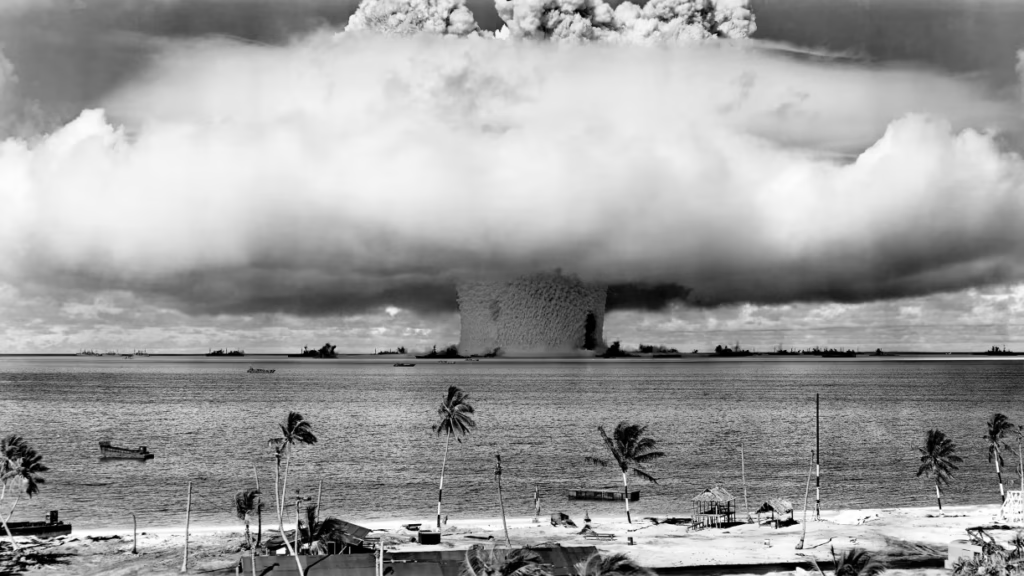Decades after the world’s nuclear powers carried out thousands of tests, the effects are still being felt by people and the environment. The explosions released radioactive materials such as iodine-131, cesium-137, and strontium-90 into the air, water, and soil. These particles entered the food chain and built up in human bodies, increasing risks of thyroid cancer, leukemia, and other diseases. Scientists estimate that atmospheric tests alone may have caused more than two million cancer deaths worldwide.
In the Pacific, islands like Bikini Atoll were permanently scarred. Communities were forced to evacuate, fishing grounds were poisoned, and many people later reported miscarriages, birth defects, and cancers. In Kazakhstan, where the Soviet Union carried out hundreds of tests, families suffered genetic damage and high rates of cancer that continue to affect future generations.
Fallout also reached places far from the test sites, including Nevada in the United States, Maralinga in Australia, and Mururoa in French Polynesia. Many of these areas were home to Indigenous and rural communities who had little power to resist and ended up bearing the heaviest costs.
Today, campaigners and affected nations are demanding justice, cleanup, and recognition of the suffering caused. Many are also urging full international support for the Comprehensive Nuclear-Test-Ban Treaty to ensure no future generations face the same fate.


